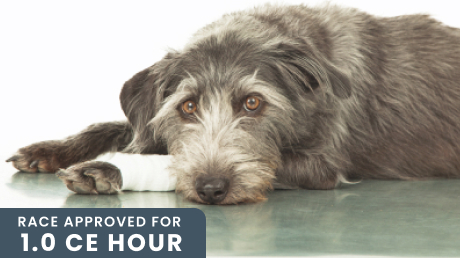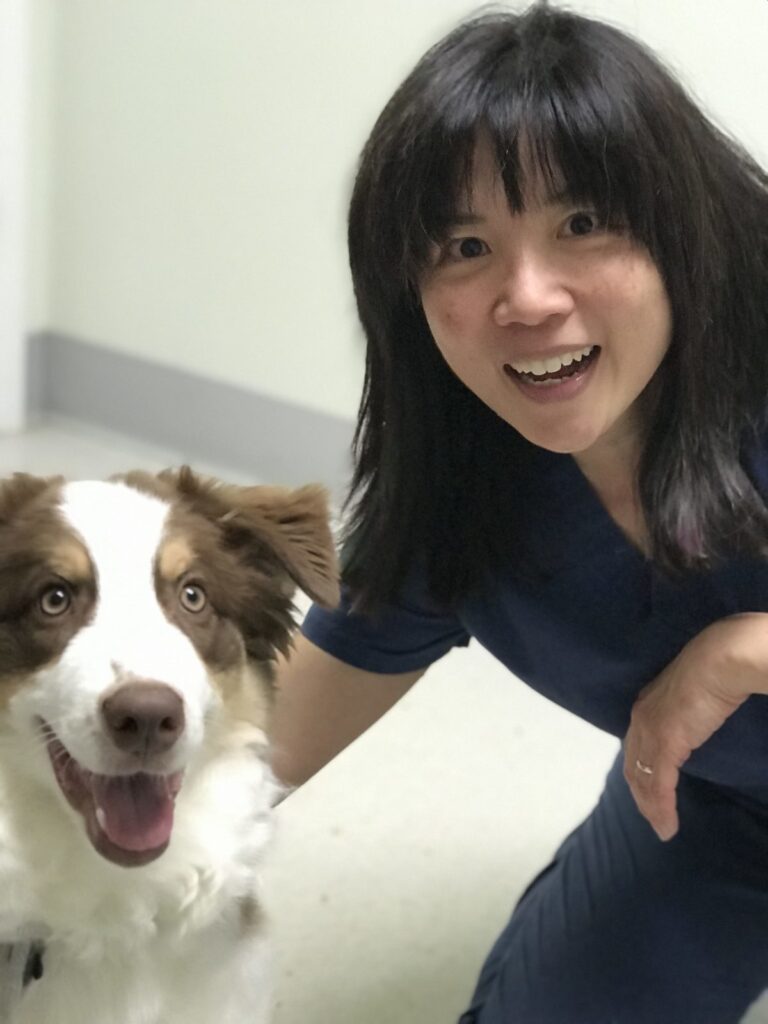
It’s not unusual for dogs to be fearful of veterinary visits, but it doesn’t have to be that way. Many dogs have benefited from Fear Free techniques to help them get through what was once a frightening event and even learn to love it. Here are some of their stories.
Kindness Worth Traveling For
 I’m a Fear Free trainer, but there are no veterinarians I trust in my town, so I travel an hour to TLC Pet Hospital in Albuquerque and have had the most amazing experiences, thanks to the patience, kindness, and knowledge of the staff there. My dogs are fearful, and one is especially vet-phobic after traumatic experiences elsewhere. Some of his past vet visits have been so anxiety-inducing for him that I also end up in tears. But with gabapentin on board and the Fear Free approach from Dr. Long and Sam the veterinary assistant, my dog was wagging, approaching them, licking their faces, asking for pets, and acting like the brave and social dog he is at home. All of us in the room were floored by the change! At the next checkup he took food from them, did some chin-rest stationing with them, targeted their hands, and showed off his tricks. My own fear, anxiety, and stress levels have been drastically reduced thanks to their dedication to Fear Free vet visits. I’ll continue to do the two-hour round trip because I love having a veterinarian who listens to me and treats me like an adult, and because my dogs’ mental and emotional health is taken as seriously as their physical health at TLC. I am so thankful for their care and commitment to Fear Free vet visits and their overall friendly clinic.
I’m a Fear Free trainer, but there are no veterinarians I trust in my town, so I travel an hour to TLC Pet Hospital in Albuquerque and have had the most amazing experiences, thanks to the patience, kindness, and knowledge of the staff there. My dogs are fearful, and one is especially vet-phobic after traumatic experiences elsewhere. Some of his past vet visits have been so anxiety-inducing for him that I also end up in tears. But with gabapentin on board and the Fear Free approach from Dr. Long and Sam the veterinary assistant, my dog was wagging, approaching them, licking their faces, asking for pets, and acting like the brave and social dog he is at home. All of us in the room were floored by the change! At the next checkup he took food from them, did some chin-rest stationing with them, targeted their hands, and showed off his tricks. My own fear, anxiety, and stress levels have been drastically reduced thanks to their dedication to Fear Free vet visits. I’ll continue to do the two-hour round trip because I love having a veterinarian who listens to me and treats me like an adult, and because my dogs’ mental and emotional health is taken as seriously as their physical health at TLC. I am so thankful for their care and commitment to Fear Free vet visits and their overall friendly clinic.
Erica Beckwith, CTC, CBCC-KA, Fear Free Certified Professional, A Matter of Manners Dog Training, Santa Fe, New Mexico
Blood Draw Pugcess
Tater Tot is a Pug who needed a dental cleaning. Since he would be undergoing anesthesia, we required blood work beforehand. Tater Tot was generally friendly, soliciting attention and being food motivated, but when we attempted to occlude his lateral saphenous vein, he stopped eating and attempted to bite the technician holding him. He became distressed and tried to back up, so the technician placed him on the floor, where he again tried to bite her. The owner agreed to bring him in later on some anxiety medication.
Tater Tot came in a second time on gabapentin as well as clonidine. He appeared less excited and fidgety, but still sought attention. We offered him baby food on a disc toy and did his blood draw on the floor instead of the table. He ate throughout as we attempted to collect blood from his lateral saphenous veins. After poking both legs without success, we held him in position for jugular venipuncture, performed some brief desensitization and counterconditioning for that positioning, and successfully drew blood from his jugular vein. He went straight back to the baby food after the blood draw.
Maria Marano, The Ohio State University Veterinary Medical Center, Community Practice, Columbus
Toby Turns Around
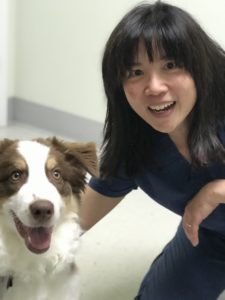 I work closely with the veterinary hospitals in my town. The team at Appalachian New River Veterinary Associates (ANRVA) referred Toby to me. Toby was terrified at the veterinary hospital and could not take food, even as a young puppy. I established a rapport with Toby away from the veterinary hospital. I did this using special food and something else Toby loved – play! Toby learned foundation behaviors that gave some predictability to our sessions and helped him feel safe.
I work closely with the veterinary hospitals in my town. The team at Appalachian New River Veterinary Associates (ANRVA) referred Toby to me. Toby was terrified at the veterinary hospital and could not take food, even as a young puppy. I established a rapport with Toby away from the veterinary hospital. I did this using special food and something else Toby loved – play! Toby learned foundation behaviors that gave some predictability to our sessions and helped him feel safe.
The team at ANRVA invited me to work with Toby in the exam rooms during their lunch break. Since Toby already had negative associations at the veterinary hospital, we started those sessions with just Toby’s owners and me. Toby and his owners entered the exam room the first time and surprise – I was there with some extra-special food for Toby (hamburger) and his favorite toy. Toby readily ate the memorable food and played with a toy. He even performed some simple behaviors. We repeated this a couple of times, and by the third time, Toby was excited to get to the exam room. Then we incorporated Dr. Suan Koh into our play and training sessions and, later, Dr. Cathy Kreis. Some of the support staff also got in on the fun.
Toby was successful for many reasons. He had committed owners who took the time to help Toby feel better about his veterinary care. The team at ANRVA is as committed to Toby’s behavioral health as they are to his physical health. They encourage and welcome clients to come in for happy visits with their pets. And, finally, both the owners and veterinary team are committed to positive reinforcement training.
Marge Rogers, CBCC-KA, CPDT-KA, Certified Fear Free Professional, Rewarded Behavior Continues, West Jefferson, North Carolina
A Win for Maxwell
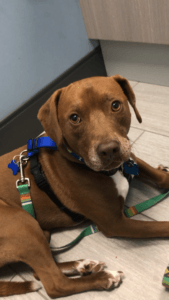 Maxwell is a 7-year-old retriever/hound mix who was rescued from a hoarding situation with more than 100 dogs. Maxwell was the most fearful of them. We don’t know a lot about Maxwell’s day-to-day life while on the hoarder’s property, but volunteers reported that he was kept in a small shed without much social interaction.
Maxwell is a 7-year-old retriever/hound mix who was rescued from a hoarding situation with more than 100 dogs. Maxwell was the most fearful of them. We don’t know a lot about Maxwell’s day-to-day life while on the hoarder’s property, but volunteers reported that he was kept in a small shed without much social interaction.
Not surprisingly, he was fearful of people and of being touched or handled. The veterinary facility that provided Maxwell’s initial care was unable to examine him or perform any medical or handling procedures unless Maxwell was placed under anesthesia or heavy sedation. Maxwell would shake uncontrollably and withdraw if any person approached him. Unfortunately, during his initial care, some handling interactions were forced on Maxwell to which he responded by “gator-rolling,” snapping, and inflicting a severe bite to one of the vet techs.
After moving to a foster home, Maxwell was taken to see the wonderful Dr. Lynn Honeckman, owner of Veterinary Behavior Solutions and a Level 3 Fear-Free Certified Professional. She diagnosed Maxwell with severe global fear of people and new environments and started him on a course of daily behavior medication in an effort to reduce his anxiety.
Maxwell did not do well in his initial foster homes, so in December 2018 he moved into a new foster home, where he has remained and is doing very well. During his initial visit as well as his behavior rechecks, Dr. Honeckman recommended introducing Maxwell to cooperative care behaviors and made specific recommendations of pre-visit pharmaceuticals to help alleviate Maxwell’s fear during veterinary visits.
Since December 2018, Maxwell has been a client at Loch Haven Veterinary Hospital (one of the lead veterinarians, Dr. Jim Martin, is Fear Free certified and the entire hospital including all technicians follow the Fear Free approach). Since then, every veterinary visit has consecutively been more positive and more stress-free for Maxwell. Prior to his visits, Maxwell receives a combination of gapabentin and Sileo. His appointments are scheduled during times when the hospital is less busy, and the staff ensures we get put into a treatment room right away, where Maxwell is given ample time to acclimate before any staff enter the room. Physical handling is kept to a minimum and all procedures follow the Fear Free approach. One of Maxwell’s many cooperative care behaviors was to comfortably wear a basket muzzle. Although he has shown zero signs of aggression since switching to Loch Haven Veterinary Hospital, Maxwell now happily wears the muzzle for any physical handling in the exam room, which allows everyone to feel comfortable and at ease. Now – almost a year later – Maxwell no longer (or only rarely) shakes when entering the veterinary hospital. He willingly accepts treats while waiting in the exam room and is eager to perform his chin rest behavior while waiting to be seen. As his foster mom, I am overjoyed by Maxwell’s progress, none of which would have been possible without his dedicated veterinarians. Their care, patience, and understanding in using a Fear Free approach has made a world of difference for Maxwell and we could not be more grateful to them.
In his foster home, Maxwell has blossomed into a happy and playful dog who is particularly fond of his canine housemates. New environments will likely always pose challenges for Maxwell, but at home he has found his happy place.
Daniela Ackerman, Orlando, Florida
Want to be featured? Submit your success story here!
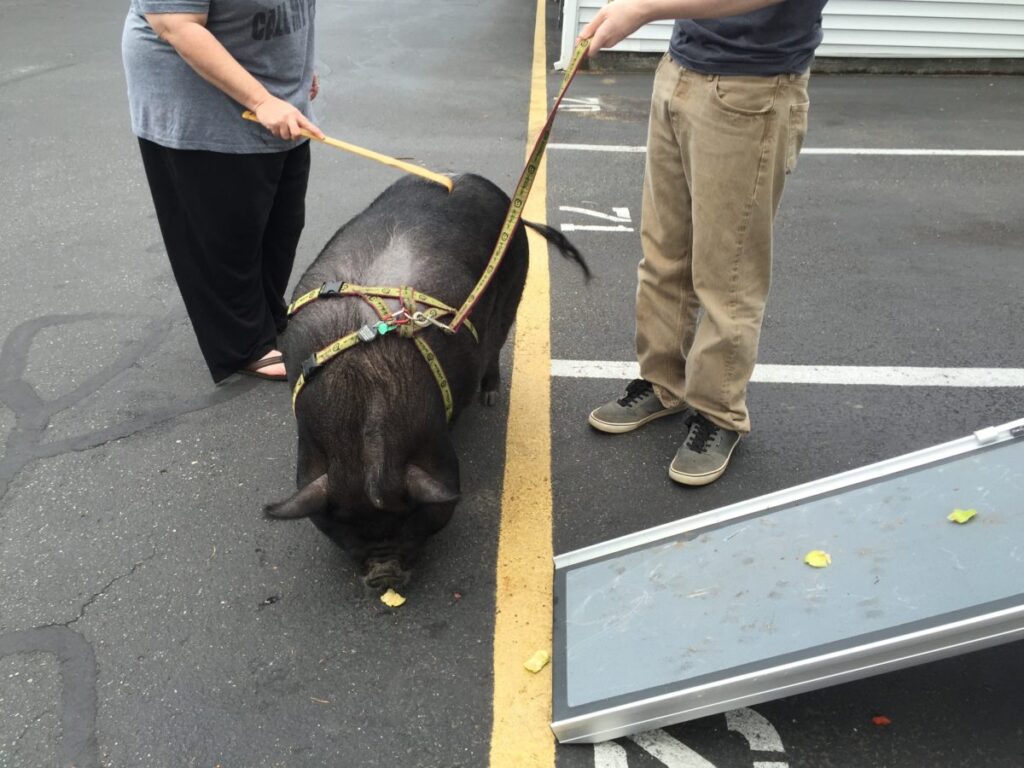

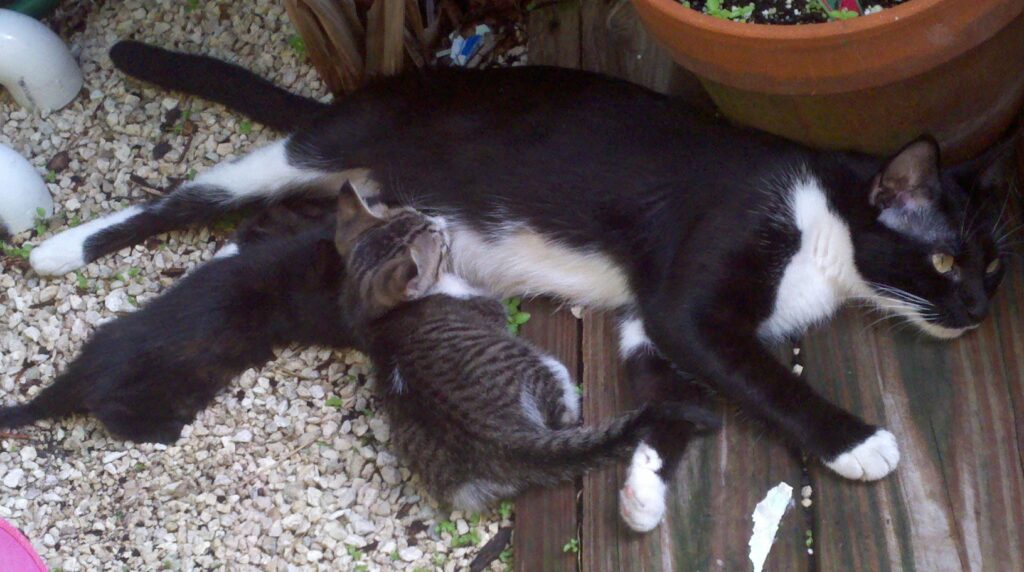
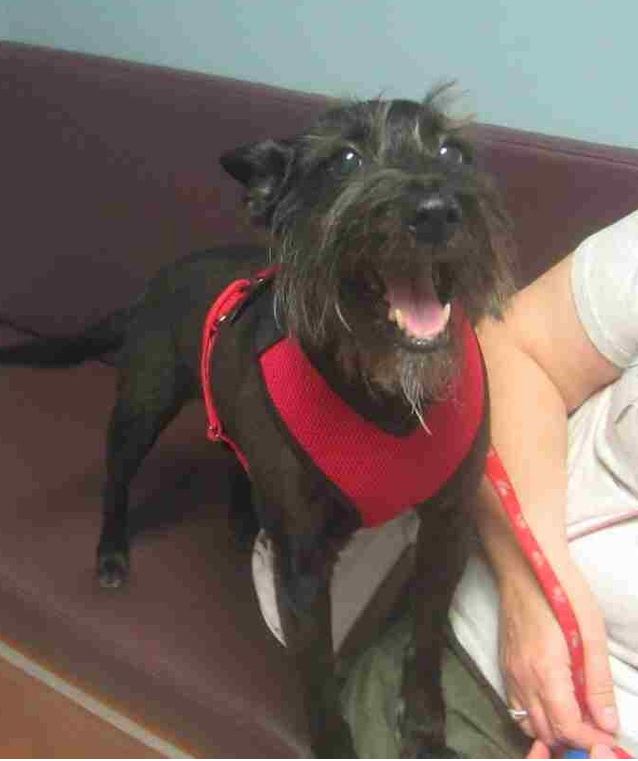
 owner told us that his previous clinic had to muzzle him, and he was handled somewhat roughly. She wanted to get away from that. On his first visit we just got a feel for his comfort level. He barked and growled at us in the room but took treats willingly. He allowed an otoscopic exam but was tense, and when the stethoscope was introduced, he actively tried to bite. Approaching him with a muzzle sent him into a panic. We sent some Trazodone home with him that day for future visits and discussed doing a set of behavioral visits to help desensitize him to handling and instruments.
owner told us that his previous clinic had to muzzle him, and he was handled somewhat roughly. She wanted to get away from that. On his first visit we just got a feel for his comfort level. He barked and growled at us in the room but took treats willingly. He allowed an otoscopic exam but was tense, and when the stethoscope was introduced, he actively tried to bite. Approaching him with a muzzle sent him into a panic. We sent some Trazodone home with him that day for future visits and discussed doing a set of behavioral visits to help desensitize him to handling and instruments.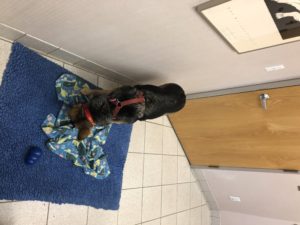 able to make her visit less stressful and even a bit enjoyable. Our veterinarian is part of a Fear Free practice (Thank you,
able to make her visit less stressful and even a bit enjoyable. Our veterinarian is part of a Fear Free practice (Thank you,  We were beside ourselves on how to handle taking Roger to the vet. We put him through basic obedience and advanced obedience classes twice to learn manners and how to act appropriately. He has done great in our home and in our families’ homes as we know how to handle his anxiety. In our vet’s office, though, Roger would go crazy as his anxiety shot through the roof from all the smells and people. Thanks to the Fear Free program and team at Frey Pet Hospital, Roger can feel safer and happier
We were beside ourselves on how to handle taking Roger to the vet. We put him through basic obedience and advanced obedience classes twice to learn manners and how to act appropriately. He has done great in our home and in our families’ homes as we know how to handle his anxiety. In our vet’s office, though, Roger would go crazy as his anxiety shot through the roof from all the smells and people. Thanks to the Fear Free program and team at Frey Pet Hospital, Roger can feel safer and happier 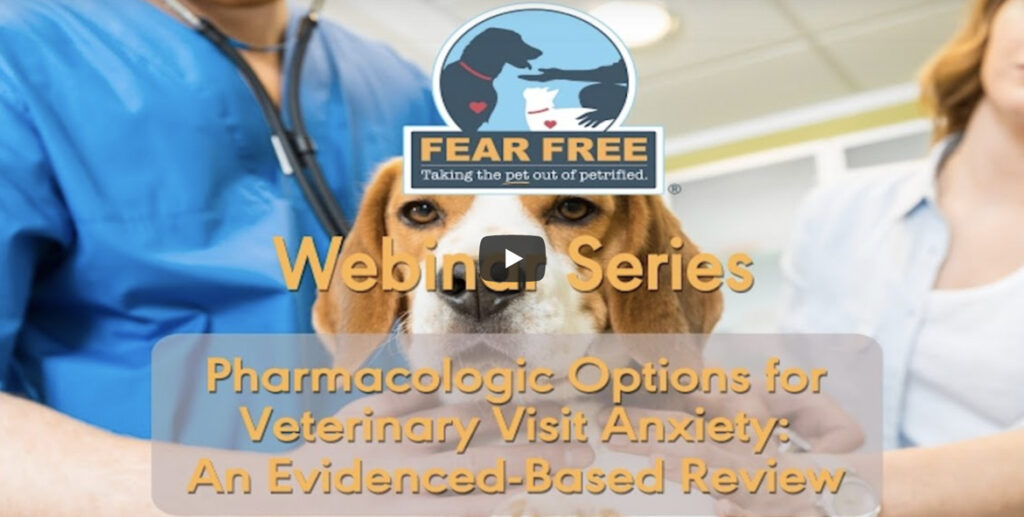
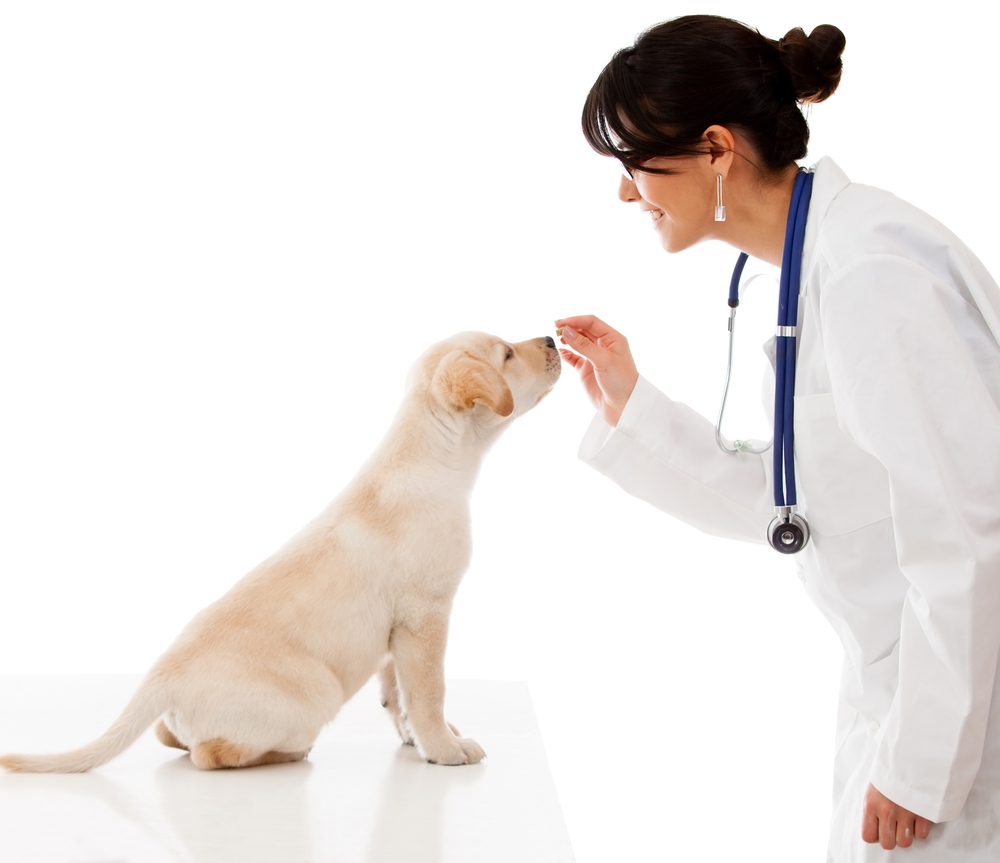
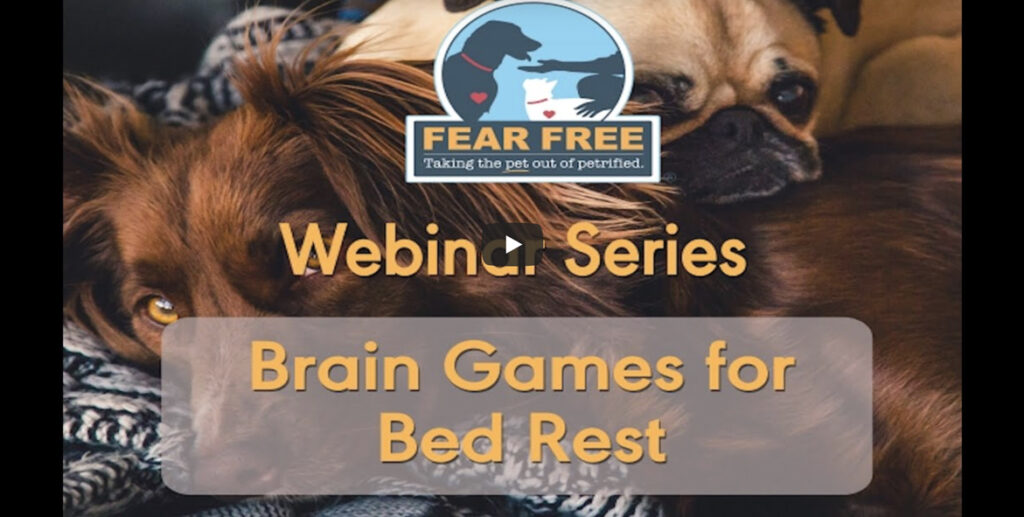
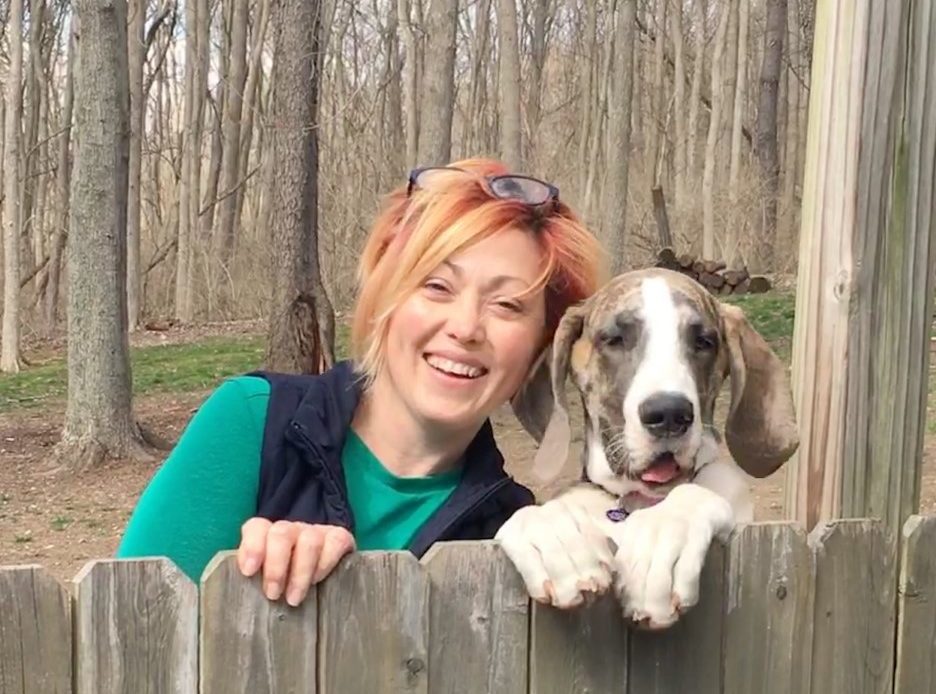
 When Fiona first came to us at Gamble Pet Clinic, an examination without a fearful reaction from her was impossible. An attack by another dog at a young age had caused her to be anxious and nervous ever since. She had been muzzled at every veterinary clinic since her attack until coming to Gamble Pet Clinic. She was fearful initially, trying to nip at the doctor and staff when they attempted to examine her.
When Fiona first came to us at Gamble Pet Clinic, an examination without a fearful reaction from her was impossible. An attack by another dog at a young age had caused her to be anxious and nervous ever since. She had been muzzled at every veterinary clinic since her attack until coming to Gamble Pet Clinic. She was fearful initially, trying to nip at the doctor and staff when they attempted to examine her. I took the Fear Free course. It was interesting and useful. I’m now working with two local veterinary offices who found me through the Fear Free website.
I took the Fear Free course. It was interesting and useful. I’m now working with two local veterinary offices who found me through the Fear Free website. Sal was brought to us to establish why he had been having chronic vomiting and diarrhea. When I approached him in the lobby, he immediately pinned his ears and retreated under the couch. We brought him into an exam room, and he warmed up a bit but was still wary. Mom and Dad mentioned that in the past at other clinics he was taken to “the back” for vaccines and they could hear him vocalizing from the exam room.
Sal was brought to us to establish why he had been having chronic vomiting and diarrhea. When I approached him in the lobby, he immediately pinned his ears and retreated under the couch. We brought him into an exam room, and he warmed up a bit but was still wary. Mom and Dad mentioned that in the past at other clinics he was taken to “the back” for vaccines and they could hear him vocalizing from the exam room.